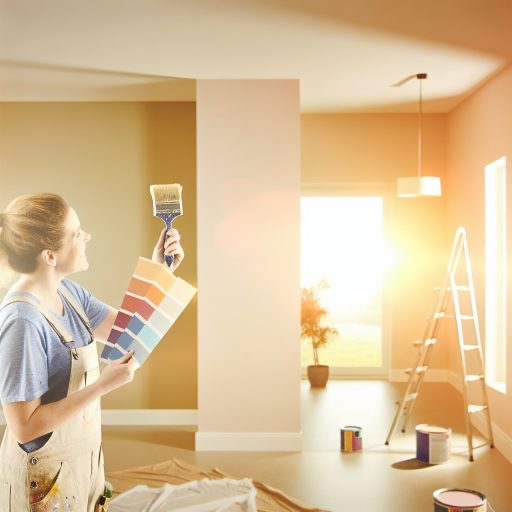Introduction:
Understanding tile layout patterns is crucial in achieving stunning designs in any space.
Different patterns can create various effects, enhancing the overall aesthetics.
From simple grid layouts to intricate herringbone designs, each pattern brings a unique appeal to the space.
Tile layout patterns dictate the flow, movement, and visual impact of a room, making them a key element in design.
Whether you want to create a sense of continuity, add visual interest, or make a bold statement, the layout pattern you choose will play a significant role.
With a variety of options available, it’s essential to understand the impact of each layout pattern to achieve the desired design outcome.
Understanding the Basic Layout Patterns:
Explaining traditional layout patterns such as running bond, stack bond, and herringbone.
Discussing the characteristics of each pattern and where they are typically used.
Running Bond Pattern:
The running bond pattern is one of the most commonly used tile layout patterns.
In this pattern, tiles are offset by half from the tile below, creating a staggered appearance.
This pattern is known for its simplicity and versatility, making it suitable for both traditional and modern designs.
It is often used in kitchens, bathrooms, and outdoor spaces.
Stack Bond Pattern:
The stack bond pattern involves aligning tiles in a straight grid pattern, with each tile stacked directly above or below the other.
This pattern creates a clean and modern look, perfect for contemporary spaces.
It can be used on both floors and walls, adding a sense of uniformity and simplicity to the design.
Herringbone Pattern:
The herringbone pattern is a classic layout pattern that adds a sense of elegance and sophistication to any space.
In this pattern, tiles are laid at a 45-degree angle to create a zigzag effect.
The herringbone pattern is often used on floors to create visual interest and draw the eye towards a focal point.
It is a popular choice for entryways, hallways, and feature walls.
Each of these basic layout patterns has its own unique characteristics and can be used to achieve stunning designs in various spaces.
Transform Your Career Today
Unlock a personalized career strategy that drives real results. Get tailored advice and a roadmap designed just for you.
Start NowBy understanding the differences between these patterns and where they are best applied, you can create a cohesive and visually appealing tile layout in your home.
Exploring Unique and Creative Layout Patterns
When it comes to tile layout patterns, there are several unique and creative options that can elevate the design of your space.
Here, we will introduce some less common patterns such as basketweave, crosshatch, and windmill, and explore their visual impact and versatility.
Basketweave Pattern
- Consists of squares and rectangles arranged in a woven pattern.
- Offers a timeless and elegant look to any room.
- Suitable for both traditional and modern design schemes.
- Creates a sense of visual interest and texture.
Crosshatch Pattern
- Involves intersecting lines to form a grid-like pattern.
- Provides a contemporary and geometric appeal.
- Great for adding a modern touch to your space.
- Can be used in various color combinations for a unique look.
Windmill Pattern
- Features a pinwheel design with four sets of tiles rotating.
- Brings a dynamic and playful element to the room.
- Ideal for creating a focal point in a space.
- Can be customized with different tile shapes for a personalized touch.
These unique tile layout patterns are great options for those looking to add a touch of creativity and flair to their design.
Whether you prefer a classic basketweave, a modern crosshatch, or a playful windmill pattern, each of these layouts can make a statement in your space.
Uncover the Details: How to Become a Boilermaker: Step-by-Step Guide
Factors to Consider When Choosing a Layout Pattern:
When it comes to selecting the perfect layout pattern for your tile design, there are several factors that you need to take into consideration.
One of the most important considerations is the size and shape of the tile itself.
The size and shape of the tile will play a significant role in determining which layout pattern will work best for your space.
For example, larger tiles are often better suited for open spaces, as they can help create a sense of continuity and flow.
On the other hand, smaller tiles are better suited for more intricate patterns or designs, as they can be arranged in various ways to create stunning visual effects.
In addition to the size and shape of the tile, you also need to consider the size and layout of the space where the tiles will be installed.
The layout of the space will impact the overall look and feel of the design, so it is important to choose a layout pattern that complements the size and layout of the room.
For smaller spaces, such as bathrooms or kitchens, a simple layout pattern like a straight or diagonal pattern may work best.
These patterns can help make the space feel larger and more open, while also adding a touch of elegance and sophistication.
On the other hand, larger spaces, like living rooms or dining areas, can benefit from more intricate layout patterns, such as herringbone or basketweave patterns.
These patterns can add visual interest and movement to the design, making the space feel more dynamic and engaging.
Overall, when choosing a layout pattern for your tile design, it is essential to consider both the size and shape of the tile, as well as the size and layout of the space where the tiles will be installed.
By taking these factors into account, you can create a stunning design that will truly elevate the look of your space.
Showcase Your Business Today
Reach thousands of readers actively exploring professional services. Publish your business profile and grow your audience now.
Publish NowDelve into the Subject: Innovative Trends in Landscape Architecture 2025
Mixing and Matching Patterns for a Custom Look:
When it comes to tile layout patterns, mixing and matching different designs can create a unique and personalized look for your space.
This trend has gained popularity in recent years for its ability to add visual interest and depth to a room.
Exploring the trend of mixing different patterns within the same space:
- Consider using a combination of geometric and floral patterns to create a dynamic and modern aesthetic.
- Experiment with contrasting colors and textures to enhance the overall impact of the tile layout.
- Incorporate different shapes such as hexagons, diamonds, or chevron patterns to add complexity to the design.
- Opt for a mix of matte and glossy finishes to create a subtle contrast that reflects light differently.
Providing tips on how to successfully blend patterns for a cohesive design:
- Start by choosing a primary pattern that will serve as the focal point of the room.
- Use secondary patterns to complement the primary design and create a sense of balance.
- Stick to a consistent color palette to ensure that the different patterns work harmoniously together.
- Consider the scale of the patterns and how they will interact with each other in the final layout.
- Don’t be afraid to mix different types of tiles, such as porcelain, ceramic, and natural stone, for added texture and depth.
By following these tips and exploring the possibilities of mixing and matching patterns, you can achieve a custom look that is both visually stunning and cohesive in design.
Gain More Insights: Understanding Overtime Rules for Dockworkers
Using Tile Layout Patterns to Enhance Specific Areas:
When it comes to designing with tiles, the layout pattern you choose can have a significant impact on the overall look and feel of a space.
Different patterns can be used strategically to highlight specific features and enhance the beauty of a room.
Here are some ways you can use tile layout patterns to enhance specific areas:
Highlighting Backsplashes:
- Using a herringbone pattern for your backsplash can add a touch of elegance and sophistication to your kitchen or bathroom.
- A subway tile layout can create a classic and timeless look, perfect for traditional or modern spaces.
- Consider a diagonal layout for a unique and eye-catching backsplash design that adds visual interest to the room.
Accentuating Accent Walls:
- Opt for a chevron pattern on an accent wall to create a dynamic and visually striking focal point in your living room or bedroom.
- A vertical stack layout can elongate the walls and draw the eye upwards, making the room feel more spacious and luxurious.
- Experiment with a basketweave pattern to add texture and depth to an accent wall, transforming it into a stunning feature in the room.
By choosing the right tile layout pattern for specific areas in your home, you can enhance the beauty and functionality of each space.
Whether you’re looking to create a focal point with a backsplash or accentuate an accent wall, the possibilities are endless when it comes to using tile layout patterns creatively.
Find Out More: Environmental Impact of Lumberjack Work

Tips for Achieving a Professional Finish:
When it comes to achieving a professional finish with your tile layout patterns, proper planning and attention to detail are key.
Follow these tips to ensure your designs turn out stunning:
Proper Planning and Layout:
- Measure the space carefully and calculate the number of tiles needed.
- Create a layout plan on paper or with a design software to visualize the pattern.
- Consider factors like the size and shape of the tiles, as well as the layout of the room.
- Pay attention to transitions between different areas and plan your patterns accordingly.
- Mock up the design on the floor before installation to make sure it looks right.
Tools and Techniques for Precise Alignment:
- Invest in a good quality tile cutter to ensure clean and accurate cuts.
- Use tile spacers to maintain even spacing between tiles for a professional look.
- Consider using a laser level or chalk lines to ensure straight and precise alignment.
- Work in small sections to prevent adhesive from drying before you can lay the tiles.
- Keep your work area clean and organized to avoid mistakes and ensure accuracy.
By following these tips and techniques, you can achieve a professional finish with your tile layout patterns that will enhance the overall design of your space.
Remember, attention to detail and precision are key when it comes to creating stunning tile designs.
Case Studies and Examples of Successful Tile Layout Patterns:
When it comes to designing spaces with tile layouts, it’s essential to understand how different patterns can transform a room.
Here, we explore real-life examples of successful tile layout patterns that have elevated design aesthetics:
Showcasing before and after photos of spaces transformed by unique tile layouts:
- By showcasing before and after photos, you can visually see the impact that tile layouts have on a space.
- From outdated to modern, these transformations demonstrate the power of thoughtful tile design.
- Whether it’s a bathroom, kitchen, or living room, the right tile layout can completely change the look and feel of a room.
- From small spaces to large areas, each transformation highlights the versatility of different tile patterns.
- Seeing the transformation side by side is a powerful way to understand the impact of tile layout choices.
Highlighting real-life examples of how different patterns can elevate a design aesthetic:
- From herringbone to chevron, each pattern brings a unique design element to a space.
- By showcasing real-life examples, you can see how different patterns can create a specific vibe.
- For instance, a subway tile layout can create a classic and timeless aesthetic in a kitchen.
- On the other hand, a hexagonal tile pattern can bring a modern and geometric feel to a bathroom.
- By understanding how different patterns work in real spaces, you can choose the right one for your design goals.
Looking at case studies and real-life examples of successful tile layout patterns can provide valuable inspiration for your next design project.
Whether you’re looking to refresh a room or completely renovate a space, the right tile layout can make all the difference in creating a stunning and cohesive design aesthetic.
Implications of Tile Layout Patterns
Understanding tile layout patterns is crucial for creating visually appealing designs.
By following the principles discussed in this blog post, you can achieve stunning results in your space.
Experimenting with different tile layouts can help you personalize your design and make it unique.
Don’t be afraid to think outside the box and explore new possibilities with tile arrangements.
The layout pattern you choose can make a significant impact on the overall look of your space.
Have fun playing around with different patterns and see how they can transform your design.
Creating a beautiful and personalized space is all about creativity and experimentation.
This blog post has inspired you to take your tile layout patterns to the next level.
Now go ahead and unleash your creativity to design a space that truly reflects your style and personality.
Thank you for reading, and we can’t wait to see the stunning designs you will create!
Additional Resources
Home : Occupational Outlook Handbook: : U.S. Bureau of Labor …
2010 ADA Standards for Accessible Design | ADA.gov
[E-Books for Sale]
The Big Book of 500 High-Paying Jobs in America: Unlock Your Earning Potential
$19.99 • 500 High-Paying Jobs • 330 pages
Explore 500 high-paying jobs in America and learn how to boost your career, earn more, and achieve success!
See All 500 High-Paying Jobs of this E-Book
1001 Professions Without a Degree: High-Paying American Jobs You Can Start Now
$19.99 • 1001 Professions Without a Degree • 174 pages
Discover 1001 high-paying jobs without a degree! Unlock career tips, skills, and success strategies for just $19.99!




